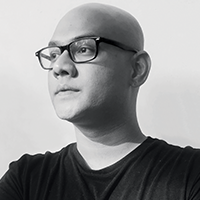
Between 2011-12, Take on art and I had the chance to collaborate on a special issue on Indian Design. Raising the question of what design means in the context of the country, this attempted to provide a broad set of references and insights from the late 19th Century to the early 2010s, hoping to start a conversation on the need for reflective writing on a subject, trajectories of which have been particularly distinct in the Indian subcontinent. The issue’s mandate was wide and its voices diverse: from makers exploring their own processes of work, scholars and academicians suggesting possible approaches of articulating developments in the field and curators discussing exhibition-making, to visual art specialists analysing design’s relationship with its own institutional frameworks.
A few months earlier, I had co-curated with Khoj International Artists’ Association in New Delhi, a two-week residency, The Idea of Fashion, intended to create a dialogue between fashion designers and visual artists from India. It was here, in Khirki Extension, with its cosmopolitan population – local residents whose families have lived in the area for several decades on the one hand, and on the other, transitory groups of students from Iran, Afghanistan and Africa, as well as a complex network of migrant manual labourers from varied linguistic backgrounds across the country – that one felt the need for ways to reflect about fashion which are rooted in the immediate, changing realities of urban India. Perhaps, seven years later, and in what seems like a generation apart, the time has come.
As a designer, writer, curator and archivist working within a present ecology of Indian fashion defined by fashion designers, magazines, Fashion Weeks, Bollywood and its emphasis on celebrity-culture, one has tried to expand the engagement of this with a larger pool of ideas and resources, whether they be from contemporary art, textiles or handcraft. Further, one has consistently proposed the urgency to create a framework for generating histories on Indian fashion, which can help us understand its evolution in relation to the changing social, economic, political and technological landscapes of the country. This special issue on Indian Fashion is an effort towards this, and can be seen against an environment of what can be considered one of its most dynamic periods of experimentation and expression.
Moving away from a regular format of commissioning essays and articles by ‘expert’ authors, its main narrative has been created through a series of interactions with people from a range of personal and cultural backgrounds, each of whom has contributed with reminiscences, anecdotes, photographs and other kinds of visual material, from a variety of sources, which include family albums and professional archives. These interactions, in person, on the phone or via email, have been transcribed into quotations, which are interspersed with a continuing, overarching narrative of text, as well as additional relevant images sourced from private and institutional collections. Together, they provide a perspective on Indian fashion over a century, from the early 20th Century to now, moving back and forth between national or regional events, and intimate memories.
Being such a vast subject, it is nearly impossible to make any publication on Indian fashion of this kind comprehensive, of all individuals and events which have shaped its historical circumstances. This makes no claim for such a pursuit. It is to be received therefore, as a collation of thoughts and opinions of its contributors, strung through observations of connections, which one has seen as relevant in pointing out today. When writings on Indian fashion so far, have largely focused on the processes and public aspects of fashion designers’ work, specific periods in post independent India, or anthropological dissertations, I hope this will help readers trace a broader arc, and enable future initiatives in such interactive, and inclusive modes of authorship.
For a magazine such as Take on art with a focus on critical writing and a discursive style, I am grateful to its Editor and Publisher Bhavna Kakar, for being open and supportive of this departure from its regular format – it has taken courage on her part to put forth this unconventional issue, with its resulting phases of delays and uncertainties. I would like to equally acknowledge the involvement and inputs of the magazine’s editorial team – Shrinjita Biswas, Suyashi Smridhi, Ayushi Koul and Adwait Singh.
Anupam, this is for you.













